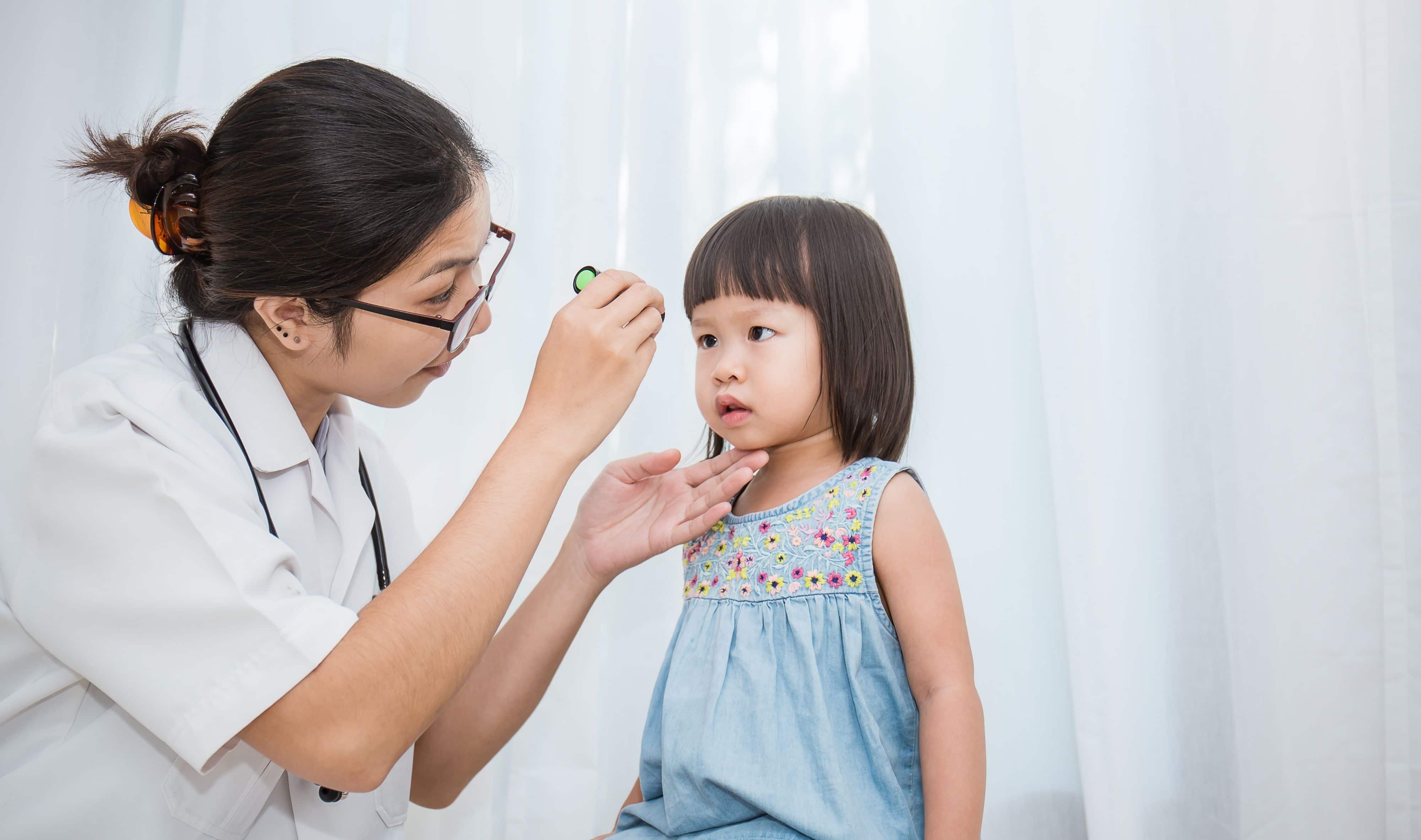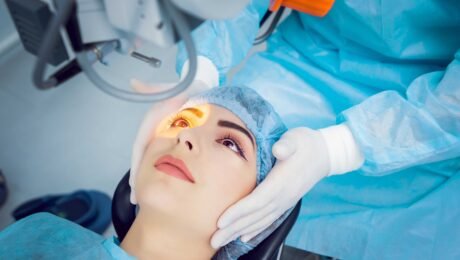It is important to do periodic eye examinations
It is important to do periodic eye examinations
[/vc_column_text][/vc_column][/vc_row][vc_row][vc_column][vc_single_image image=”9392″ img_size=”full”][/vc_column][/vc_row][vc_row][vc_column][vc_column_text]Periodic eye examination require a series of tests to be able to evaluate sharp eyesight and determine the eye disease. Just like in dental health, to get good eye health you also must have your eyes checked regularly. Especially for those who are nearsighted or near and already use glasses or contact lenses for vision aids every day.An eye exam requires a series of tests to be able to evaluate sharp vision and determine which eye disease you are suffering from. The eye doctor will use various instruments to perform the examination. During the examination, several aspects will be evaluated, especially those related to your vision ability and eye health conditions in general and specifically.
Why is this done?
Periodic eye examination will help detect problems at their earliest stages, which is when they are easier to treat if they are present. Regular eye examinations will provide an opportunity for your eye doctor to help correct and can provide tips on caring for your eye health or provide appropriate treatment, in case of sharp changes in vision or other conditions compared to the results of previous examinations.
When to have an eye exam?
Several factors can determine how often you need an eye exam. Factors that play a role include age, the presence of systemic diseases (diabetes mellitus, hypertension, etc.) which can cause complications in the eye, or eye disease.

General guidelines are as follows:
Children 3 years and under
For children under 3 years of age, your pediatrician will look for the most common eye problems such as lazy eyes, crossed eyes or misaligned eyes. If there are any such eye problems or symptoms, it can be done immediately at that time regardless of age. Your child can have a more comprehensive eye exam between the ages of 3 and 5.
School-age children and adolescents
Check your child’s vision before entering first grade. If it turns out that your child has no visual symptoms and there is no family history of visual disturbances, have his eyes checked again every one or two years. If there are symptoms of visual disturbances and require correction of the glasses. Periodic eye examinations can be performed between 6 months and 1 year.
Adults
In general, if your eyes are healthy and you have no visual symptoms, get your eyes checked on the following schedule:
1.Every 5 to 10 years in their 20s and 30s
2.Every 2 to 4 years from 40 to 54
3.Every 1 to 3 years from 55 to 64
4.Every 1 or 2 years after age 65
5.Every 1 or 2 years after age 65
Get your eyes checked more frequently if you:
- Eyeglass or contact lens wearers
- Have a family history of eye disease or vision loss
- Having a chronic systemic disease that puts you at a greater risk of eye diseases, such as diabetes mellitus
- Take medications that have serious eye side effects, such as several types and forms of corticosteroids.
- Published in Mata
What Are The Best Vitamins For Eye Health?
What Are The Best Vitamins For your Eye?
[/vc_column_text][/vc_column][/vc_row][vc_row][vc_column][vc_single_image image=”9377″ img_size=”full”][/vc_column][/vc_row][vc_row][vc_column][vc_column_text]Hello Happy Eyes People!Your eyes are complex organs that need lots of vitamins to function properly. Certain vitamins are essential for maintaining good eye health. Many are powerful antioxidants that protect the eyes and other parts of the body from oxidative damage and inflammation.
Deficiencies in particular vitamins can increase the risk of some eye conditions, such as cataracts, glaucoma, and age-related macular degeneration (AMD).
Research shows that some vitamin and mineral supplements can help protect against or slow the progression of the condition.
In this article, we outline four vitamins that are essential for good eye health, as well as a list of various vitamins from food sources. Let us see together!
4 vitamins that contribute to eye health
People who want to protect their eye health should consume adequate amounts of the vitamins in their diet.
1. Vitamin A
Vitamin A is essential for good vision. It is a component of the protein Rhodopsin which allows to eye to see in low light conditions.
Vitamin A also supports the function of the cornea, which is the protective outer layer of the eye. A person who is deficient in vitamin a may find that their eyes produce too little moisture to stay lubricated.
2. Vitamin E
Alpha tocopherol is a form of vitamin E that has particularly powerful antioxidant properties. Antioxidants help fight free radicals, which can damage tissues throughout the body. Sometimes, free radicals may damage proteins within the eye. This damage can result in the development of cloudy areas called cataracts.
A 2014 review looked at studies linking vitamin E to the prevention of cataracts. Some of the research found that lens clarity was better in people who took Vitamin E supplements.
3. Vitamin C
Vitamin C is another powerful antioxidant that helps protects against oxidative damage. Oxidative damage is a key factor in two of the most common age-related cataracts. Cortical cataracts develop on the edges of the lens, while nuclear cataracts occur deep in its center or nucleus.
4. B Vitamins
A 2009 study suggest that daily supplementation with a combination of vitamins B-6, B-9, and B-12 may reduce the risk of AMD. AMD is a degenerative eye disease that effects the vision.
However, this particular study only includes women. Therefore, more research is needed to support the use of B vitamins in preventing AMD in both women and men.
An older study looked at nutrient intake and eye health in 2,900 people between the ages of 49 and 97 years. The findings revealed that higher intakes of protein, vitamin A, and the B-vitamins riboflavin, thiamine, and niacin had an association with a lower rate of nuclear cataracts.
Food sources of this vitamin
A healthy, balanced diet containing the following foods can provide enough vitamins and nutrients to promote eye health. Research suggests that these nutrients work together to protect the eye, so eating a wide variety of healthy foods is the best approach and way to keep your eyes healthy.
Below, we list the vitamin food sources we mention in this article.
1. Vitamin A and beta carotene:
- Sweet potato
- Carrot
- Red pepper
- Pumpkin
2. Vitamin E:
- Almonds
- Sunflower seeds
- Peanuts
- Safflower oil
- Soybean oil
- Corn oil
- Wheat germ oil
- Asparagus
3. Vitamin C:
- Oranges and orange juice
- Broccoli
- Brussels sprouts
- Blackberry
- Grapefruits juice
4. Vitamin B-1, or thiamine:
- Beans
- Lentils
- Pork
- Fish
- Green beans
- Yogurt
5. Vitamin B-2, or riboflavin:
- Beef
- Oat
- Yogurt
- Milk
- Clams
- Mushrooms
- Almonds
6. Vitamin B-3, or niacin:
- Beef liver
- Chicken
- Salmon and tuna
- Brown and white rice
- Peanuts
7. Vitamin B-6, or pyridoxine:
- Chickpeas
- Dark leafy greens
- Poultry
- Beef liver
- Salmon and tuna
8. Vitamin B-9, or folic acid:
- Dark leafy greens
- peanuts
- Beans
- Seafood
- Sunflower seed
- Egg
9. Vitamin B-12, or cobalamin:
- Fish
- Heart
- Red meat
- Poultry
- Egg
- Fortified milk, cereals, and nutritional yeast
Consuming foods that contain vitamins is particularly good for maintaining a healthy body. Do a consultation on your eye health with our doctor at Ciputra SMG Eye Clinic to regularly check eye conditions.
Source:
What are the best vitamins for eye health?[/vc_column_text][/vc_column][/vc_row]
- Published in Featured Article, Featured Article, Health Talk, Health Talk, Mata, Mata
Myopia is not a disease
Myopia Is Not A Disease
[/vc_column_text][/vc_column][/vc_row][vc_row][vc_column][vc_single_image image=”9405″ img_size=”full”][/vc_column][/vc_row][vc_row][vc_column][vc_column_text]Hello Happy Eyes People!Do you know? Currently, the number of minus eye sufferers is increasing every day. Minus eye This conditions makes someone’s vision uncomfortable. The cause is not only an unhealthy lifestyle, but heredity or genetic factors.
The minus eye condition is getting worse, if not accompanied by changes in lifestyle and medication. One form of treatment uses vision aids, such as minus glasses or contact lenses.
Well, as you know, minus or nearsightedness (myopia) is the most common visual disorder. As for minus eye is not a disease; it’s a variation of the normal eye.
At least In fact, one in four adults in the world experience this condition. Of course, with various degrees of severity the severity ((mild, moderate, and severe) )which . The caused, is an elongated (more oval) eyeball.
Causes of Eye Minus
Below, hereHere are some of the causes of eye minus that often occur:, namely:
- Hereditary / genetic factors
- Premature birth
- Lifestyle related to the eyes; especially for those who frequently interact in front of computers, televisions, and devices/gadgets (extensive near work).
Eye Minus Symptoms: Closer to Objects, Squinting, and Headaches
In everyday life, minus eye symptoms can be seen in the habit of someone squinting, bringing objects closer together so they can see clearly, especially when someone is. Usually when reading books and watching television. Often also The symptoms can also effect complain of headaches. This happens due to their inability to see objects that are far away.
When Will Minus Eye Increase Stop?
In general, the minus eye will stop increasing, when a person enters the age of 18, when the growth and development of the eyeball is maximal. This is also influenced by genetic or hereditary factors. That way, it’s a good idea to do an examination with an ophthalmologist to find out whether the growth of the eyeball is maximal.
When Is Surgery Recommended?
If wearing glasses or contact lenses makes someone uncomfortable, eye Lasik surgery can be an option to eliminate or reduce eye complaints. Eye Lasik can make your minus and cylinder eyes disappear and can make sufferers finally able to see more clearly without any vision aidstools (glasses or contact lenses).
Lasik Eye
Currently, there is the newest Lasik Eye technology in the world, namedly ReLEx SMILE. This technology originated in Germany and can heal the eyes with 15-20 minutes of surgery for 2 eyes. This eye surgery is not a major operation as usual, it is arguably a non-invasive, fast, and painless procedure.
After Operation
Usually, after surgery, the patient will feel some discomfort, such as watery or dry eyes, foggy vision, and sensitivity to light. However, this feeling will gradually disappear, usually within 6 hours after surgery. Dry eyes usually last up to 1 month. However, don’t worry, after the operation, the doctor will give you eye drops that will help you relieve discomfort.
Thus, it must be remembered that minus eye is not a disease. However, if you feel uncomfortable with your vision, do an examination with an ophthalmologist and consult first if you want to do eye Lasik.
Reviewed by dr Ika
Source: Here Are Seven Facts About Minus Eyes[/vc_column_text][/vc_column][/vc_row]
5 Tips for Preventing Digital Eye Strain
5 Tips for Preventing Digital Eye Strain
Eyes Tired due to gadgets is caused by straining the eyeball muscles to read text and images on the gadged screen continuously. You have never felt tired eyes due to gadgets, right? How many hours do you spend each day staring at the screens of gadgets such as laptops and smartphones? In an era of advanced technology like now, doing activities with gadgets for a long time is really common. It’s hard not to stare at the screen of their daily gadgets for every office worker,student, and freelancer. The activity of staring at this screen can cause stiff neck and eye fatigue due to being gadged and dry. In the short term, these disorders do not have serious consequences. However, if allowed to continue, you have the potential to experience more serious problems, such as pink eye disease.

Computer Vision Syndrome.
In mid-March 2020, many government and private agencies have started implementing the work from home method. Where this policy was carried out because of the spread of Coronavirus Disease 2019 (Covid-19). Many people are required to spend more time at home to carry out Physical Distancing activities or maintain social distancing, so that indirectly there is an increase in time on gadget screens, such as laptops and smartphones, during working hours and free time. Unfortunately, long screen time can cause Digital Eye Strain, also known as Computer Vision Syndrome.
Digital Eye Strain.
Eye fatigue caused by being gadgets is caused by the tension in the eyeball muscles to read text and images on the screen continuously, as well as a decrease in the frequency of eye blinking. Eye focused on a screen tend to blink ½ to 1/3 slower than normal blinking rate. Common symptoms of Digital Eye Strain include headaches, dry eyes, glare, blurred or shaded vision, and pain in the neck, shoulders and back. Here are some tips for better on screen gadget activities, so that they can help reduce or even prevent Digital Eye Strain.
Follow the 20-20-20 rule: Every 20 minutes, take your eyes a break from the screen and focus on something 20 feet away for 20 seconds.
Proper screen distance and placement: Your screen should be about 25 inches (or an arm’s length) from your eyes and 15-20 degrees below your eye level.
Set lighting: There are two types of lighting that you need to adjust. For room lighting, you need to set the light in the room neither too bright nor too dark. Then, you also need to adjust the lighting level of the gadget screen so that it is not too bright because it can make your eyes tried quickly. You can attach an anti-glare screen to the monitor to reduce light reflection.
Adjust Contrast: You need to adjust the contrast on the monitor screen. The comfort level of screen contrast varies from person to person, but try not to be too high. If possible, also adjust the color temperature on the screen because it affects the spectrum of light emitted by the screen.
Keep your eyes moisturised: Remembering to blink regularly, and the use eye drops to help prevent your eyes from becoming to dry.
These are some ways to deal with tired eyes that you can do everyday. Apart from doing the tips above, don’t forget to get enough sleep and consume healthy foods to maintain eye health, as well as evaluate your eye health condition with a control to an eye specialist regularly, at least once per year.
Reviewed: dr. Azrina Noor, SpM
- Published in Featured Article, Mata






